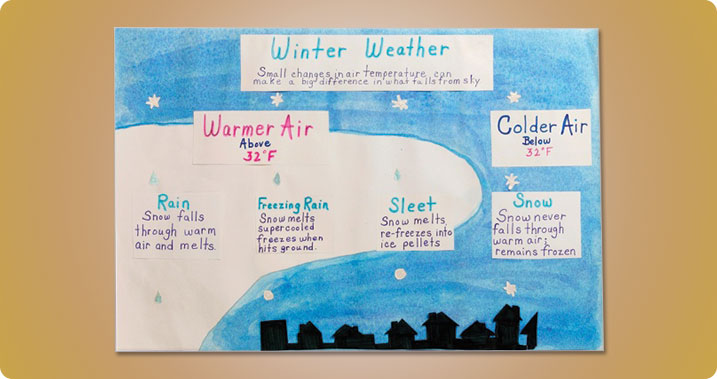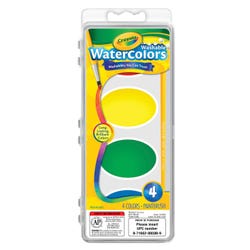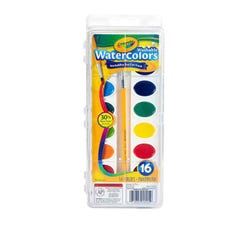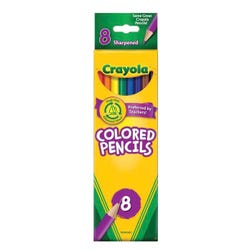Winter Weather Wonders

Description
In temperate climates, winter brings rain, sleet, freezing rain, hail, and snow. How is water changed into so many different forms of precipitation?
Supplies Needed
Colored Pencils
Cup Or Bottle
Glue Sticks
Paper Towels
Pointed Tip Scissors
Recycled Material
Washable Fine Line Markers
Washable Watercolors
Standards
LA: Read with sufficient accuracy and fluency to support comprehension.
LA: Read and comprehend informational texts, including history/social studies, science, and technical texts, at the high end of the grade level text complexity band independently and proficiently.
LA: Participate in collaborative conversations with diverse partners about grade level topics and texts with peers and adults in small and larger groups.
LA: Determine or clarify the meaning of unknown and multiple-meaning words and phrases based on grade level reading and CONTENT, choosing flexibly from a range of strategies.
LA: Produce clear and coherent writing in which the development and organization are appropriate to task, purpose, and audience.
SCI: Construct an argument with evidence that some changes caused by heating or cooling can be reversed and some cannot.
SS: Describe and speculate about physical system changes, such as seasons, climate and weather, and the water cycle.
VA: Use visual structures of art to communicate ideas.
VA: Use different media, techniques, and processes to communicate ideas, experiences, and stories.
Instructions
1
Why can it rain, freezing rain, sleet, hail, or snow all in one day? What causes precipitation to change within minutes? Have students find out the answers and then create a chart to show the information. Here are some ideas for starters:
2
Cover art area with newspaper. Using Crayola® Watercolors and a Watercolor Brush, paint a large sky-blue area. To show warmer air, leave part of the space white.
3
On another sheet of paper, use Crayola Fine Line Markers to write the titles and explanations needed for the chart. Sections might be Warmer Air, Colder Air, Rain, Sleet, Freezing Rain, Hail, and Snow. Cut these out with Crayola Scissors. Attach them to the poster with Crayola Glue Sticks.
4
On another sheet of paper, use Crayola Colored Pencils to draw and color raindrops, snowflakes, and dots to signify freezing rain or sleet. Cut them out and glue them to the chart.
5
Students present their findings to the class at school and at home to their families.
Adaptations
Possible classroom resources include: Water Dance by Thomas Locker; The Water Cycle by Hellen Frost; The Water Cycle: Evaporation, Condensation & Erosion (Earth's Processes) by Rebecca Harman. Invite a local meteorologist to visit with the class and discuss his profession, predicting the weather, and obstacles to accuracy. Prior to the visit, students compose questions for the guest. Afterwards, students post learning to a class blog. Encourage students to research acid rain, its causes and effects on the environment. Make proposals about what can be done to diminish or eliminate acid rain. Can this be done? Challenge the class to investigation local precipitation over an extended period of time. Students build containers and draw charts in order to document precipitation measurements. Analyze findings and make predictions about future precipitation, effects on the environment, etc.









